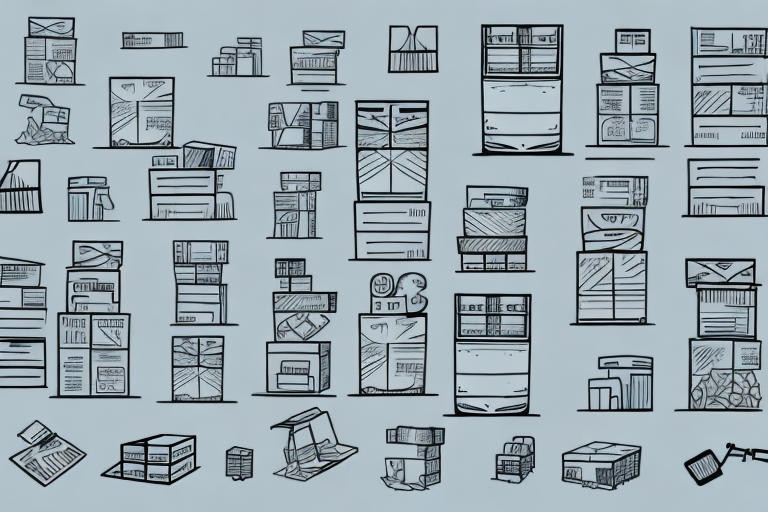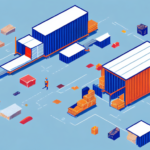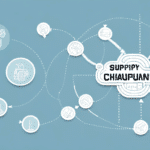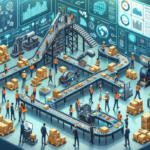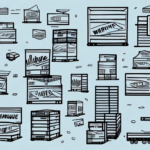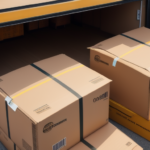Introduction to Reverse Logistics
Reverse logistics has become a critical component in today’s business operations, especially with the surge in e-commerce. It involves managing the return flow of products from consumers back to the manufacturers or sellers. Effective reverse logistics can lead to cost savings, enhanced customer satisfaction, and significant sustainability benefits. This article delves into ten real-world examples of reverse logistics, examining their impact on businesses globally.
Understanding Reverse Logistics
Definition and Core Concepts
Reverse logistics is the process of moving goods from their final destination back to the origin for returns, recycling, refurbishment, or disposal. Unlike forward logistics, which focuses on the distribution of products to consumers, reverse logistics handles the post-consumer phase, addressing product returns, recalls, and recycling efforts.
Reasons for Reverse Logistics
- Product Returns: Common in e-commerce, where customers may return items due to dissatisfaction or defects.
- Recalls: Necessitated by safety concerns or regulatory requirements.
- Recycling and Disposal: Managing end-of-life products to minimize environmental impact.
- Refurbishment: Restoring returned products for resale, thereby extending their lifecycle.
The Importance of Reverse Logistics in Modern Business
Cost Reduction
Implementing reverse logistics can significantly reduce costs associated with returns and waste management. According to a Forbes article, businesses can save up to 30% by optimizing their reverse logistics processes.
Enhancing Customer Satisfaction
Efficient reverse logistics processes ensure that customers experience hassle-free returns, which enhances their overall satisfaction and loyalty. A study by the Harvard Business Review highlights that seamless return processes can boost customer retention rates by up to 25%.
Promoting Sustainability
Reverse logistics plays a pivotal role in achieving sustainability goals by reducing waste and promoting the recycling and reuse of products. The Environmental Protection Agency emphasizes that effective reverse logistics can lower a company's carbon footprint and contribute to a circular economy.
Reverse Logistics vs. Forward Logistics
Key Differences
While both reverse and forward logistics involve the movement of goods, their objectives and processes differ. Forward logistics focuses on delivering products from manufacturers to consumers efficiently, whereas reverse logistics manages the return flow of goods for various purposes such as returns, recycling, or disposal.
Challenges in Reverse Logistics
Managing the quality of returned goods is a significant challenge. Unlike forward logistics, where products are typically new, returned items vary in condition, requiring thorough inspection and categorization. Additionally, aligning reverse logistics with customer expectations for quick and easy returns can be complex.
Cost Savings through Reverse Logistics
Reverse logistics can lead to substantial cost savings by recovering value from returned products. According to a report by McKinsey & Company, companies can recover up to 90% of the product's value through refurbishment and resale.
- Refurbishment and Resale: Restoring returned goods for resale reduces the need for new production.
- Recycling: Salvaging materials from returned products minimizes waste disposal costs.
- Efficient Return Processes: Streamlined return operations lower handling and processing expenses.
Environmental Benefits of Reverse Logistics
Effective reverse logistics contributes significantly to environmental sustainability. By managing product returns responsibly, companies can reduce landfill waste and promote the recycling of materials. The World Bank highlights that reverse logistics can decrease waste by up to 40%, fostering a more sustainable business model.
Case Studies of Reverse Logistics Success
Amazon’s Reverse Logistics Strategy
Amazon has developed a robust reverse logistics system to handle the high volume of returns inherent in e-commerce. Their strategy includes providing prepaid return labels, streamlined pick-up services, and efficient processing facilities. This approach not only enhances customer satisfaction but also reduces operational costs. More details can be found in Amazon’s official statements.
Dell’s Product Take-Back Program
Dell’s comprehensive take-back program focuses on recycling and refurbishing returned electronics. By reclaiming over 90% of returned products, Dell minimizes environmental impact and recovers valuable materials. Information on Dell’s sustainability efforts is available in their sustainability report.
Challenges and Best Practices in Reverse Logistics
Common Challenges
- Managing Costs: Handling returns involves various costs, including transportation, inspection, and restocking.
- Quality Control: Ensuring returned products meet quality standards for resale or recycling.
- Integration with Forward Logistics: Seamlessly aligning reverse logistics with existing supply chain operations.
Best Practices for Success
- Optimize Packaging and Transportation: Use sustainable packaging and efficient transportation methods to reduce costs.
- Automate Processes: Implement automated systems for tracking and managing returns to increase efficiency.
- Collaborate with Third-Party Logistics Providers: Partner with specialists to handle reverse logistics operations effectively.
- Regular Performance Monitoring: Continuously assess and improve reverse logistics processes based on key performance indicators.
The Future of Reverse Logistics: Emerging Trends
Automation and Technology Integration
The integration of automation and advanced technologies like blockchain and the Internet of Things (IoT) is transforming reverse logistics. These technologies enhance real-time tracking, improve transparency, and optimize the return process. According to a Supply Chain Digital report, the adoption of AI and machine learning in reverse logistics is expected to grow by 35% over the next five years.
Sustainability Metrics
As environmental concerns become more pressing, incorporating sustainability metrics into reverse logistics operations is essential. Companies are increasingly focusing on reducing their carbon footprint and promoting circular economy practices through efficient reverse logistics.
Measuring the Success of Reverse Logistics Programs
To evaluate the effectiveness of reverse logistics, companies should monitor key performance indicators (KPIs) such as return rate, processing time, recovery rate, and customer satisfaction. Utilizing tools like Gartner's KPI framework can help businesses track and improve their reverse logistics performance systematically.
- Return Rate: The percentage of products returned by customers.
- Processing Time: The time taken to handle and process returns.
- Recovery Rate: The proportion of returned products that are successfully refurbished or recycled.
- Customer Satisfaction: Feedback from customers regarding the return experience.
Conclusion
Reverse logistics is no longer a mere operational necessity but a strategic advantage for businesses aiming to excel in customer satisfaction, cost management, and sustainability. By adopting best practices, leveraging advanced technologies, and continuously measuring performance, companies can harness the full potential of reverse logistics. Embracing these strategies ensures businesses remain competitive and responsible in an increasingly conscientious market.













